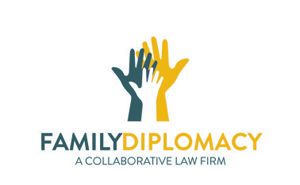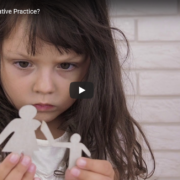Collaborative Family Law: The 4 D’s of Resolution
Collaborative Divorce, also know as Collaborative Family Law, Collaborative Practice, and the Collaborative Process, is a structured form of dispute resolution where you and your spouse/partner can reach agreements privately and amicably.
 J. David Harper, who is a forensic accountant and Collaborative Financial Neutral in Tampa Bay, refers to the structure of Collaborative Divorce as the “Four D’s.” Harper writes in his article, Traits and Skills of a Highly Financial Neutral, published in Mosten & Cordover, eds., Building A Successful Collaborative Family Law Practice (ABA 2018), the following:
J. David Harper, who is a forensic accountant and Collaborative Financial Neutral in Tampa Bay, refers to the structure of Collaborative Divorce as the “Four D’s.” Harper writes in his article, Traits and Skills of a Highly Financial Neutral, published in Mosten & Cordover, eds., Building A Successful Collaborative Family Law Practice (ABA 2018), the following:
We generally describe the [Collaborative] process as four phases, or the “Four D’s”:
- Decide to enter the Collaborative process, pledge not to go to court and not to use threats of court in this process, and focus on the future and not the past…
- Disclose documents and other information as requested (this is also referred to as the “information-gathering” phase).
- Develop financial options for creative settlement and customized solution (focus on interests rather than positions).
- Determine the best outcomes for both you and your spouse, reinforcing the fact that it is the clients’ decision.
Harper and I happen to be co-trainers with the Tampa Bay Collaborative Trainers, and we have developed the following handout to help professionals and clients understand this structure:
Collaborative Practice –
The 4 D’s of Resolution
1. Decide to Enter the Collaborative Process
A. Understand what is required of you
B. Review and sign the Participation Agreement
C. Commit to the Process
2. Disclose all Relevant Information
A. Decide what information is needed
B. Assign information gatherer(s)
C. Review shared information
D. Work through differences
3. Develop Options that Meet Interests
A. Identify issues
B. Brainstorm options – No Judgment
C. Discuss probable outcomes of each option
4. Determine Best Options for Your Family
A. Compare expected outcomes of each option to clients’ stated goals
B. Eliminate options that have outcomes that do not sufficiently meet important goals of either client
C. Narrow the options to those that meet the most important goals of both clients
D. Jointly determine the options that most closely meet the most important goals of both clients
E. Put agreed upon options in writing
If you or your family is going through a divorce or other family law matter, consider how the Collaborative Process can glide you on a smoother past to your better future.
Adam B. Cordover is a Collaborative Attorney and Florida Supreme Court Certified Family Law Mediator in Tampa Bay. Adam is co-editor with Forrest S. Mosten of Building A Successful Collaborative Family Law Practice (ABA 2018). Adam trains attorneys, mental health professionals, financial professionals, and mediators how to engage in Collaborative Practice with the Tampa Bay Collaborative Trainers.






